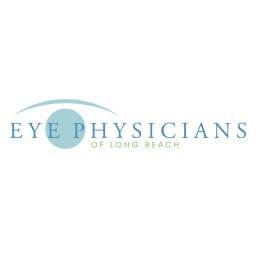Blog post by: Eye Physicians of Long Beach

What is Botox?
Every week in practice a new evolution comes to me. This week I was stunned by the number of patients that have came in for Botox treatment without really understanding what it is that Botox does or what Botox can do.
Interestingly enough Botox has been available since approximately 1980 for treatment of strabismus or crossed eyes in children. It was later modified and used for uncontrollable blinking which is called blepharospasm. Since then, Botox has been more commonly known in the public for its cosmetic uses. Yet despite all of the press and publicity that Botox has received, I find that very few people truly understand what Botox is or can be accomplished through the judicious use of Botox.
Although Botox (botulinum toxin) is a naturally occurring substance, it had many effective and powerful uses as a medication. Researchers discovered in 1950s that injecting an overactive muscle with minute quantities of purified and processed botulinum toxin type A would result in decreased muscle activity. This would effectively leak in the muscle for a period of approximately three to four months.
In cosmetic applications Botox injection consisting of a small dose of botulinum toxin can be placed in various specific muscles to weaken muscle thus preventing the development of wrinkles. The affects of botulinum toxin for preventing the development of wrinkles is probably the most well known use. Lesser known however, is that by weakening certain muscles in the face there are many other effective uses of botulinum toxin which are available for cosmetic uses. These other uses are the uses which I think are more effective in helping patients to achieve a well rested, youthful appearance they want as opposed to simply freezing their entire face to get rid of lines.
For example, one of our most popular uses of Botox today is what is termed as the Botox browlift. In this procedure by weakening the muscles which depress the brow, we can weaken these muscles allowing the muscles which raise the brow to act unopposed thus lifting the brow giving the overall effect of a gentle mild brow lift. The shape of the brow can also be contoured using precise location placement of the drug modify curvature and position of the arch of the brow.
Even less well known although probably more useful uses of Botox include reduction of the masseter muscle (jaw muscles) in order to decrease the apparent size of the lower jaw. Also, quite popular is reduction of the “gummy” smile where patient smiles and their upper lip raises up to reveal not only their teeth but their gumline as well. Placing a small amount of Botox into the muscles which raise the lip we can weaken these muscles so that when the patient smiles the lip does not retract superiorly as far thus reducing the gummy smile significantly. Increasing in popularity is the use of botox to reduce chin pebbling when patients pucker or smile. Finally, other lesser known uses of course include shaping and reduction of the calf muscles in order to change the shape and contour of the patient’s lower legs. In addition, other patients have also used Botox as successfully for reduction of excess sweating in the palms and armpits.
As you can see, the misconception that Botox is only used to freeze someone’s face to give them an unnatural no wrinkle face is far from the truth. More in depth examination reveals that Botox is really just a tool for your surgeon to achieve the look that you want. It is neither a cureall nor is it an evil drug which produces that stereotypically expressionless face. It can be controlled and used to shape a person’s face or change their expression or even alter small minor details when used in the hands of an experienced practitioner. If you are still not sure what Botox can be used for the easiest way is to schedule an appointment with a experienced practitioner of Botox so that you can discuss the look that you are trying to achieve and then decide whether Botox is the correct tool or not for your purposes.
